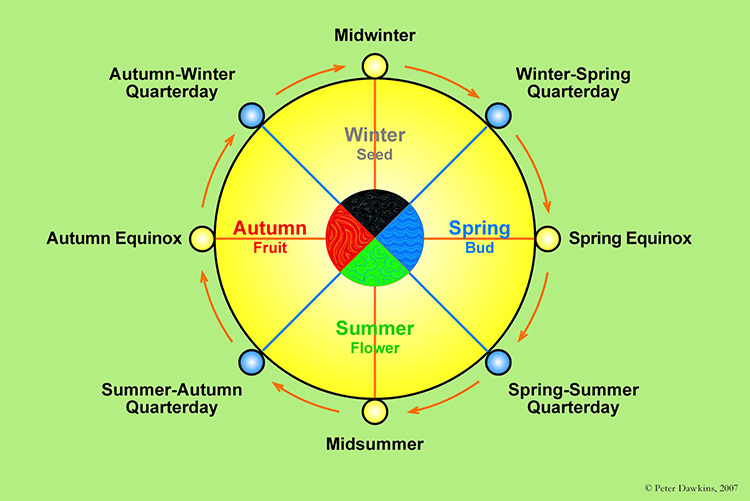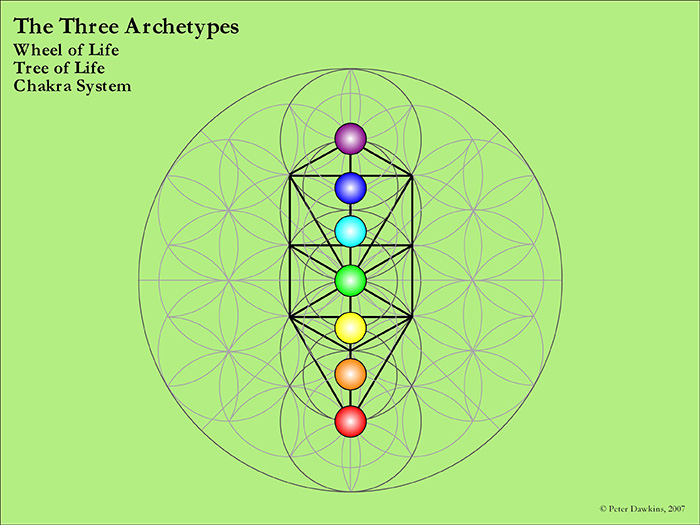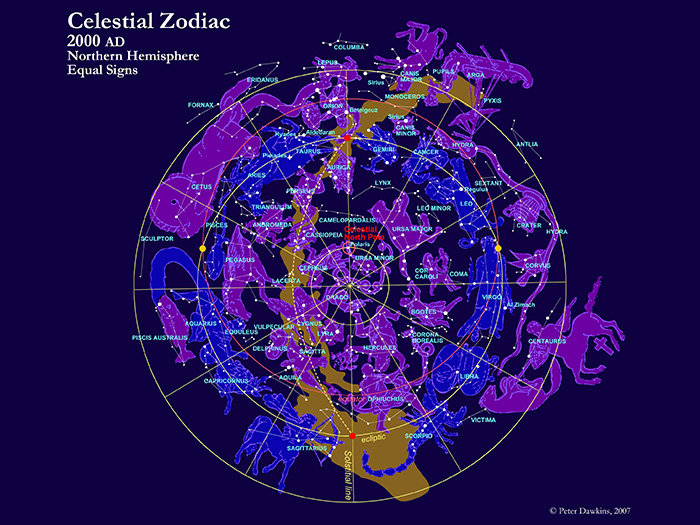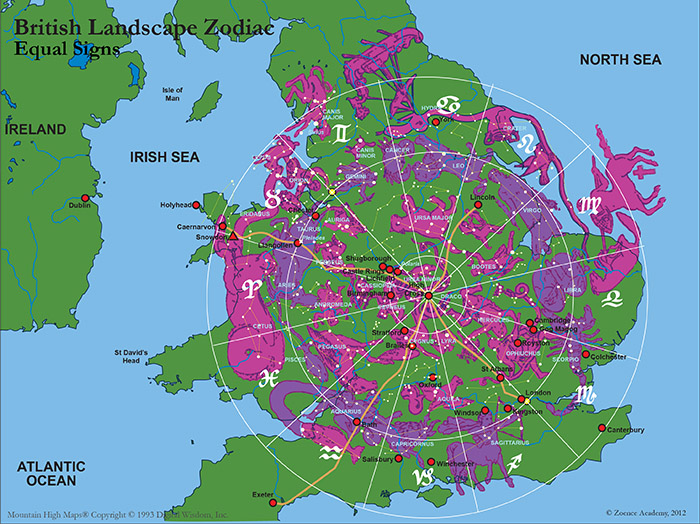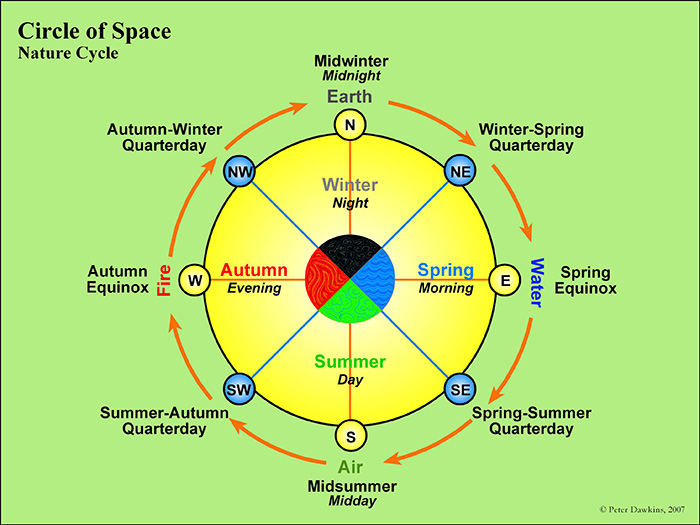Winter-Spring Quarterday (Imbolc)
Festival of Dedication
Beginning of February
The winter-spring quarterday marks the cusp of the winter season and spring season, when winter ends and spring begins.
Like all quarterdays, and unlike the solstices and equinoxes, it is not a time that can be easily noted by the position of sunrise on the horizon, unless markers have already been set out for this purpose. However, the change-over from one season to the next can be perceived by using our subtler senses of awareness, or can be determined mathematically. Weather conditions are not a good guide to judge when seasons start or end: they vary from year to year and can cause confusion in people's minds. The weather is in fact subsidiary to the real seasons, as well as being affected by other factors, both natural (such as the moon, tides, winds and ocean currents) and manmade. The real changes from one season to the next are determined by the changes in the position of the Earth in respect to the Sun, as a result of the Earth's orbit around the Sun during the course of a year. Each season is a quarter of each year, with the solstices and equinoxes marking the midpoints of each season. The quarterdays mark the midpoints between each solstice and equinox, although with the various calendar changes over the centuries and millennia the calendar festival day is not always entirely accurate.
In the classical Mysteries this winter-spring quarterday marks the time when Persephone returns from the Underworld of Hades (where she resides during the winter months), to the World of her mother, Demeter. In this, Persephone represents the spring-time sap rising in the vegetation that brings about a renewal of nature's abundance.
In Celtic countries this festival is known as Imbolc or St Bride's Day (1 February) and symbolised by the streams of water emerging out of the hillside, or from melting snow and ice. It is mythologised as the young red-haired maiden, Bride or Bridget, emerging out of the darkness of winter into the light of spring (or from childhood to maidenhood), and purifying or cleansing herself in the water.
In the Christian calendar, the quarterday is celebrated as the Feast of the Purification of the Blessed Virgin Mary, or Candlemas, the Feast of Lights (2 February), the time when, like Bride, the Virgin Mary underwent purification, followed by her presenting her Christ child in the temple and dedicating him in service to God.
All quarterdays are gateways leading from one season to the next, from one quarter of the Wheel of Life (or Time) to the following one. They are associated with the four gates of Paradise, each of which is guarded by a great Cherub. These in turn are associated with four of the signs of the zodiac. Because of the phenomenon known as the Precession of the Equinoxes, these zodiacal signs (and Cherubs) gradually change positions. During the last Age (approx. 157 BC - 2003 AD) the Festival of Dedication was associated with Aquarius, the man-faced Cherub. Now it is the Cherub of Capricorn who stands in this position.
© Peter Dawkins
- Zodiac of Ages
- The Great Ages
- The Phoenix Cycle
- The Solar Breath
- The Grail Cycle
- The Great Festivals
- Solar Festivals
- Winter Solstice
- Winter-Spring Quarterday – Imbolc
- Spring Equinox
- Spring-Summer Quarterday – Beltaine
- Summer Solstice
- Summer-Autumn Quarterday – Lammas
- Autumn Equinox
- Autumn-Winter Quarterday – Samhain
- Lunar Festivals

